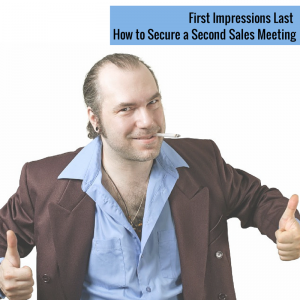 Selling your services to businesses can be very challenging, not only because of skeptical prospects but also because you are in a very competitive environment. Selling doesn’t stop with lead generation. Once you have a potential buyer, you still really have your work cut out for you. You need a sales strategy. You need to convince your prospect why you are better than your competition at providing value and solutions that are the perfect fit for the pain points your prospect is experiencing. Outshine your competition by properly personalizing the process. Understanding your prospect is a critical part of your entire small business marketing strategy. Here is what you should do.
Selling your services to businesses can be very challenging, not only because of skeptical prospects but also because you are in a very competitive environment. Selling doesn’t stop with lead generation. Once you have a potential buyer, you still really have your work cut out for you. You need a sales strategy. You need to convince your prospect why you are better than your competition at providing value and solutions that are the perfect fit for the pain points your prospect is experiencing. Outshine your competition by properly personalizing the process. Understanding your prospect is a critical part of your entire small business marketing strategy. Here is what you should do.
1. Know and understand your potential buyer: This is a significant chapter of your “homework” in the sales process. It is very important that you understand your buyer’s persona well. You can align your service solutions to your prospect’s needs only if you understand what their challenges are. You can learn a lot about their challenges by doing a search on their company, by visiting their website and all their social media pages. Their presence on LinkedIn can reveal some good information about them that, in return, can shed light on their potential pain points. The more you know about them ahead of time, the easier it will be to personalize your message. In the business environment, better understanding cultivates credibility.
2. Prepare for your first meeting: Meeting a decision maker for the first time may make you feel somewhat apprehensive. But don’t worry, that’s normal. Preparation is the key. The better prepared you are, the higher your confidence will be. Write down all the questions that you are going to ask. For example
- How many employees do they have?
- How many computers, servers, printers and mobile devices do they have?
- Do they have more than one location?
- What software and hardware applications are they currently using?
- Do they need remote access to their systems?
- Do they have a data backup plan
- What are their most pressing issues in IT support?
- Are they using VoIP technology?
- Are there any disaster recovery plans?
This is an opportunity to establish you as a partner in solving their IT issues. Your ability to ask relevant questions will be critical. Also, make sure you bring some brochures and business cards. These cards and brochures should be vertical-specific, meaning if your prospect is a CPA, along with the other information about your company on your card it should also read “IT specialists for CPAs” instead of just “IT Specialists”.
NOTE: You are meeting with a busy executive. Make sure you arrive on time for the appointment so they don’t have to wait for you. It will be even better if you arrive a little earlier and familiarize yourself with the surroundings. That will put you at ease.
3. At the Meeting: Remember that this meeting is about exchanging information. You should not discuss the technology itself with the prospect. A lot of jargon may put your prospect off because technology is not their forte. Also, you should not talk about the sales process in this meeting. You are only there to discuss their challenges and discover relevant solutions. Instinctively we like to cut in when we are well versed on a subject. So even when your prospect is talking about something that you understand very well, curb the temptation to interrupt. Be brief and specific so this meeting does not become monotonous. It is important to respect their time. Ask all the questions that are pertinent to their infrastructure. Answer all the questions in a professional and courteous manner. Thank your prospect for this opportunity and request a subsequent meeting in which you will give the presentation. After you leave, send a thank you note to the decision maker. Start preparing for the second appointment, which will be the topic of the second part of this series..
